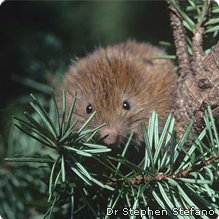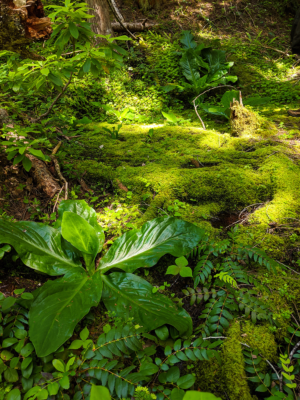Proposed Quartzville-Middle Santiam (QMS) Timber Sale Project: Field Check Trip, July 2020

by Chelsea Stewart-Fusek
Cascadia Wildlands Legal Intern, Summer 2020
On a gorgeous day earlier this month, the Willamette Valley Broadband of Great Old Broads for Wilderness joined the Cascadia Wildlands field checking team to survey some of the units in the QMS timber sale in order to help us better understand what is at stake if this sale goes forward.
The QMS project is located on U.S. Forest Service land 20 miles northeast of Sweet Home in the Willamette National Forest. This is a massive sale, encompassing 89,000 acres spanning North from Highway 20 all the way up to Detroit lake, with units bordering on protected wilderness areas and in some of the most scenic locations in the Western Cascades. Included in the sale is the harvest of Unit 166: a particularly large unit which contains incredible old-growth forest as well as rare structural diversity. Here are some of the things that we found:
Riparian Ecosystems
We came across multiple streams in this unit that weren’t marked on the USFS’s project map. At least one appears to be a perennial stream that feeds surrounding bogs. These bogs create unique plant communities and provide important habitat and food supply for insects and reptiles. Each of these waterways would need to be protected by a buffer if USFS logs here.
Large, Old Trees
Numerous large, old-growth trees exist in this unit and it appears it has never been logged—a rare, wonderful sight! We measured multiple, and some were as large as over 70” diameter at breast height. Some of the trees we came across were likely over 150 years old. These huge, old trees store a significant amount of carbon, mitigating the impacts of climate change. They are rare on the landscape as a whole and should be not be removed. Further, large, old trees provide critical habitat for northern spotted owl, red tree vole (“RTV”), and fisher. And when large trees die they create large, high-quality snags, a critical component of this ecosystem. These trees should not only be retained but should also be protected by a buffer, as their root systems are shallow and heavily impacted by disturbance and by the removal of the trees around them.
Incredible Forest Complexity
There is also a high quantity of structures in this unit, known as “legacy structures,” which provide critical habitat complexity for a variety of species, including northern spotted owl prey. These include snags, broken top trees, and downed woody debris. It’s important that USFS retain all such structures, especially because harvest of the stand as a whole will decrease snag and woody debris recruitment long-term, negatively impacting habitat availability and overall forest complexity. Finding this abundance of woody debris and legacy structures is uncommon and the USFS should recognize this is another good reason to drop this unit.
Species Diversity
This unit has spectacular conifer diversity. We identified at least six conifer species in our survey: Douglas fir, hemlock, cedar, grand fir, noble fir, and Alaska yellow cedar. It is rare to find this many conifer species in one area and this diversity should be protected. We also discovered bear scat, cat scat, and are aware of northern spotted owl habitat in the area (critical high-value designated habitat for northern spotted owl is referred to as “RA32”). Red tree vole “RTV” has also been found in this unit. Every tree a vole — or sign of a vole — is found, needs to be protected by a buffer.

Red tree vole “RTV” (photo courtesy Dr. Stephen DeStefano).
A Fire-Regenerated Forest
We came across signs of previous fire in this unit, indicating that the trees here are resilient and that fire has played its natural role on this landscape. This unit should be preserved in its natural state for that reason alone, especially as fire seasons continue to worsen. Preserving fire-resistant trees is critical to reducing fire severity in this area, which is not far from a community.
After field checking this unit, Cascadia Wildlands cannot support the USFS’s plans to cut it. This unit is old-growth forest with incredible structural diversity. It is fire-resilient and contains important habitat features for numerous native species. Simply put, this is an old stand that should be left out of the QMS project. The damaging effects of logging on this area’s ecosystem do not outweigh the benefit of fulfilling one of the three stated purposes of the QMS project (timber yield), especially when so much of the project area would need to be buffered (see map above). While buffering does mitigate some impacts of harvesting, it also disturbs habitat connectivity and is not a great alternative to the USFS dropping this unit all together.
What’s Next?
The USFS plans to release its Environmental Assessment for the QMS project this winter, at which point public comments will be accepted over a 30-day period. Until then, let the USFS know the importance of dropping Unit 166 from their harvest plans by emailing your comments to USFS NEPA Planner and Project Lead, Joanie Schmidgall at joan.schmidgall@usda.gov. Project documents can be found HERE.
*All photos above by Chelsea Stewart-Fusek.




